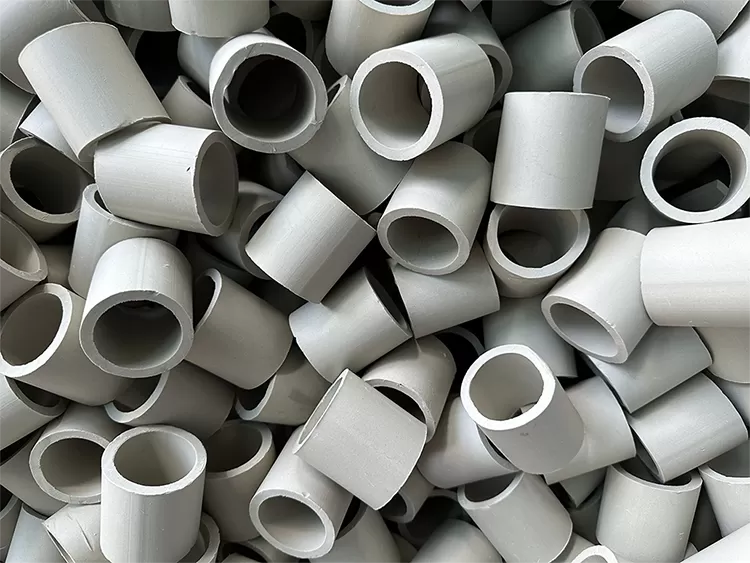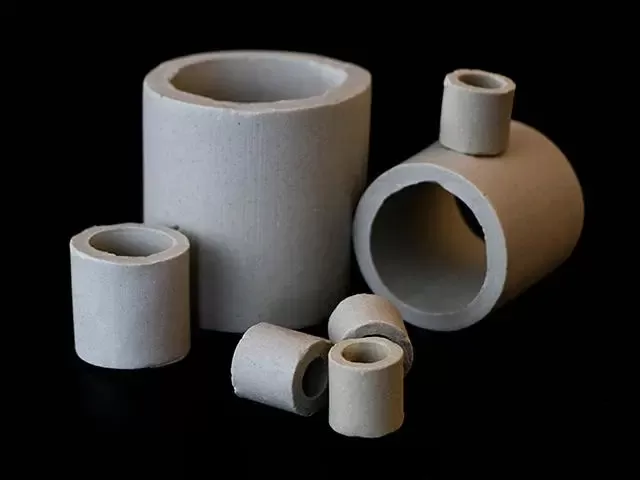The ceramic Raschig ring is the earliest fixed-geometry ring-shaped packing in the history of tower packings. The characteristic of the Raschig ring is that the outer diameter of the packing ring is equal to its height. It has a simple structure and low price, but it has problems such as uneven liquid distribution and severe wall flow and channeling. Main applications: It can be used in drying towers, absorption towers, scrubbing towers, and regeneration towers in the chemical, metallurgical, and oxygen production from coal gas industries.

| Name | Normal | Diameter×Height×Thickness | Surface area | Void space | Bulk density | No.elements | Packing factor |
| mm | mm | m2/m3 | % | kg/m3 | per/m3 | m-1 | |
| Ceramic Raschig Ring | Φ16 | 16×16×3 | 250 | 66 | 820 | 178000 | 870 |
| Φ25 | 25×25×3 | 147 | 78 | 510 | 42000 | 310 | |
| Φ38 | 38×38×4 | 100 | 80 | 458 | 12000 | 195 | |
| Φ50 | 50×50×5 | 80 | 81 | 465 | 5600 | 156 | |
| Φ76 | 76×76×9 | 62 | 75 | 575 | 1700 | 147 |

Ceramic Raschig rings are the earliest developed type of industrial random packing. They feature an open-hole ring design with a height equal to the outer diameter, and their specifications range from 3.5mm to 150mm in diameter. Depending on the size, different filling methods are adopted: for sizes above 100mm, whole stacking is mostly used, while for those below 80mm, random stacking is commonly employed. The product is mainly made from high-alumina and low-iron clay, and is sintered at a temperature above 1350℃. It has a Mohs hardness of ≥6.5 and an acid resistance of >99.8%, and can withstand chemical corrosion except for hydrofluoric acid and strong concentrated alkali. In the chemical and metallurgical industries, they are widely used in equipment such as absorption towers and drying towers, with a voidage of 53% to 75%, effectively optimizing the gas-liquid distribution efficiency within the tower.


.png)
.png)
.jpg)
.jpg)